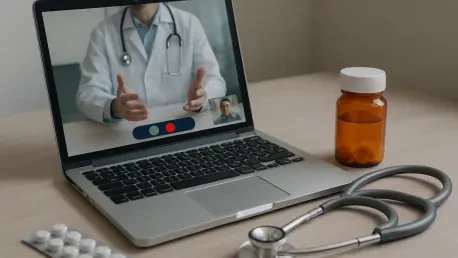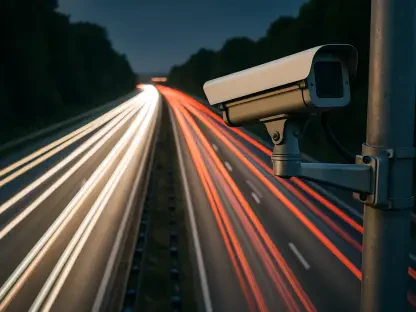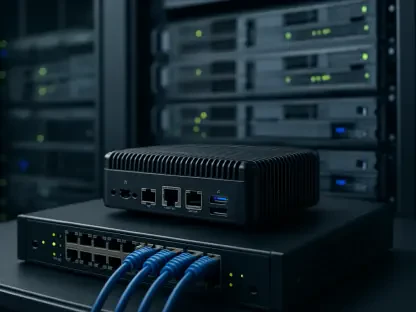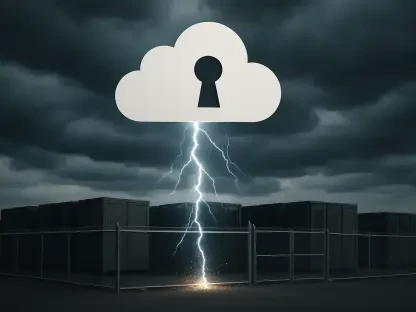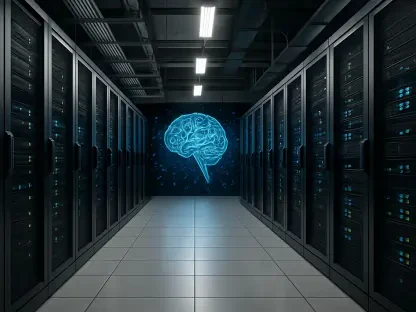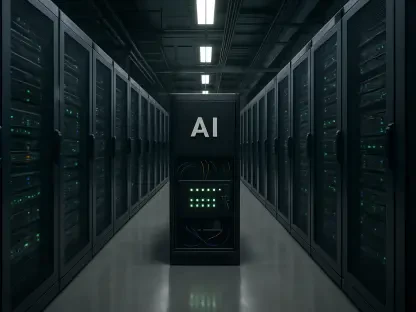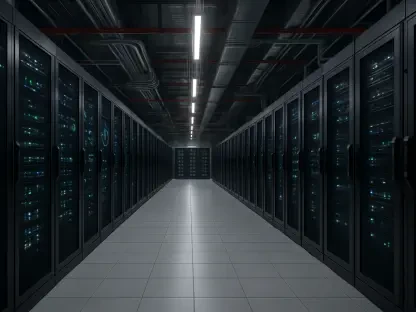In an era where healthcare systems are under immense pressure to deliver efficient and accessible care, the Internet of Things (IoT) has emerged as a transformative force in remote patient monitoring (RPM). Imagine a world where a patient with a chronic condition, living in a remote village, can have their vital signs continuously tracked by a doctor hundreds of miles away, thanks to a simple wearable device. This is no longer a distant dream but a reality being shaped by IoT technologies. Across various regions, particularly in areas facing challenges like aging populations and rising chronic disease rates, connected devices are enabling real-time data collection and personalized interventions. This shift not only empowers patients with greater control over their health but also allows healthcare providers to optimize resources and improve outcomes. The integration of advanced tools and networks is redefining how medical care is delivered, breaking down barriers of distance and time to create a more responsive system.
Enhancing Chronic Disease Management with IoT
The ability of IoT to transform chronic disease management stands as one of its most significant contributions to healthcare. Wearable sensors, such as smartwatches and glucose monitors, continuously track vital signs like heart rate, blood pressure, and oxygen levels, providing a steady stream of data to healthcare professionals. This constant flow of information allows for the early detection of potential health issues, enabling timely interventions before conditions worsen. For patients with diabetes, heart disease, or respiratory conditions, this technology offers a lifeline, reducing the likelihood of emergency hospital visits and readmissions. The precision of these devices ensures that treatment plans can be tailored to individual needs, fostering a more personalized approach to care. Beyond merely collecting data, IoT empowers medical teams to act swiftly, ensuring that patients receive the right care at the right time, ultimately improving long-term health outcomes.
Another critical aspect of IoT in managing chronic conditions lies in patient empowerment and engagement. By connecting medical devices to mobile apps, individuals gain access to their health data in real time, allowing them to monitor their own progress and adhere to prescribed regimens. This direct involvement fosters a sense of responsibility and control, which is particularly beneficial for those managing lifelong ailments. Additionally, alerts and reminders integrated into these systems help patients stay on track with medications and lifestyle adjustments, further minimizing risks of complications. Healthcare providers also benefit from this setup, as they can focus on high-priority cases while routine monitoring is handled remotely. This synergy between technology and patient participation not only enhances the quality of care but also alleviates some of the burden on overstretched medical facilities, creating a more balanced and effective healthcare ecosystem.
Boosting Efficiency and Access in Healthcare Delivery
IoT-driven remote patient monitoring is reshaping healthcare delivery by significantly boosting operational efficiency. By reducing the need for frequent in-person visits, RPM systems enable medical professionals to allocate their time and resources more effectively, prioritizing patients who require immediate or intensive care. This shift is especially crucial in regions with dispersed populations or limited medical infrastructure, where access to specialists can be challenging. Patients, in turn, experience greater convenience, receiving high-quality care without leaving their homes. The technology also streamlines administrative processes by automating data collection and reporting, allowing clinics to handle larger patient volumes with fewer delays. As a result, healthcare systems can operate more smoothly, cutting down on costs while maintaining or even improving the standard of care delivered to communities.
Beyond efficiency, IoT plays a pivotal role in expanding access to healthcare, particularly in underserved or remote areas. Connected devices and telehealth platforms bridge geographical gaps, ensuring that individuals in rural or isolated locations can receive consistent medical attention. For instance, a patient in a far-flung area can consult with a specialist via video calls, while their health data is transmitted in real time through IoT-enabled tools. This capability eliminates the barriers posed by distance and limited local resources, making specialized care more inclusive. Furthermore, the scalability of these systems means that even small clinics can adopt them without requiring massive investments, leveling the playing field for healthcare providers of all sizes. By democratizing access to medical services, IoT is helping to create a more equitable health landscape where location no longer dictates the quality of care a person receives.
Leveraging Advanced Technologies for Precision Care
The integration of cutting-edge technologies with IoT is amplifying the impact of remote patient monitoring in remarkable ways. Artificial Intelligence (AI) and Machine Learning (ML) analyze vast datasets from connected devices to identify patterns, predict potential health risks, and suggest tailored interventions. This predictive capability enhances the precision of medical care, allowing providers to address issues before they escalate into serious problems. Additionally, the rollout of 5G networks ensures faster and more reliable data transmission, supporting real-time monitoring and enabling high-bandwidth applications like video consultations. These advancements create a seamless flow of information between patients and healthcare teams, ensuring that decisions are based on the most current and accurate data available, thus elevating the overall effectiveness of treatment strategies.
Another dimension of this technological synergy is the role of innovative tools like Virtual Reality (VR) and Augmented Reality (AR) in remote care. These technologies are beginning to support therapy and rehabilitation by offering immersive solutions that patients can access from home. For example, VR-based exercises can aid in physical recovery, while AR can guide patients through complex medical procedures with visual overlays. Cloud platforms further enhance this ecosystem by facilitating secure data sharing and storage, ensuring that all stakeholders have access to critical information when needed. This interconnected framework not only improves clinical decision-making but also fosters collaboration among medical professionals across different locations. As these tools continue to evolve, they promise to make healthcare more responsive and adaptive to individual patient needs, pushing the boundaries of what remote monitoring can achieve.
Future Horizons in Connected Healthcare
Looking ahead, the future of IoT in remote patient monitoring appears poised for even greater innovation. Emerging trends suggest that AI and ML will refine predictive analytics, leading to more accurate diagnostics and earlier interventions across a broader spectrum of conditions. The scope of RPM systems is expected to expand, covering not just chronic diseases but also mental health and preventive care. Additionally, a stronger emphasis on patient-centered design will likely result in more intuitive and user-friendly platforms, making technology accessible to all age groups and tech skill levels. These advancements aim to ensure that healthcare delivery becomes not only more efficient but also more inclusive, catering to diverse populations with varying needs and ensuring that no one is left behind in the digital health revolution.
Another promising development lies in the seamless integration of telehealth with RPM systems. This combination is set to create a more connected and responsive healthcare ecosystem, where patients can transition effortlessly between virtual consultations and continuous monitoring. Such integration ensures continuity of care, with real-time data informing every interaction between patients and providers. Furthermore, as technologies like VR and AR mature, they are expected to offer novel solutions for remote therapy, rehabilitation, and even medical training. Over the coming years, from now through 2027, these trends are anticipated to solidify IoT’s role as a cornerstone of modern healthcare. By fostering greater connectivity and personalization, these innovations will continue to reshape how medical services are delivered, ensuring that care is both proactive and accessible to all who need it.
Reflecting on a Transformative Journey
Reflecting on the strides made in healthcare through IoT, it becomes evident that remote patient monitoring has undergone a profound transformation. Connected devices and real-time data collection have redefined chronic disease management, enabling early interventions that have saved countless lives. Efficiency in healthcare delivery has improved dramatically as resources are allocated more effectively, while access has expanded to even the most remote regions, bridging long-standing gaps. The integration of AI, 5G, and immersive technologies like VR has pushed the boundaries of precision and innovation in patient care. Moving forward, the focus should shift toward strengthening data security and privacy to safeguard this connected ecosystem. Additionally, investing in education and infrastructure will ensure that both patients and providers can fully embrace these tools. As the journey continues, collaboration between tech developers and healthcare stakeholders will be key to unlocking the full potential of IoT, paving the way for a healthier, more connected future.
